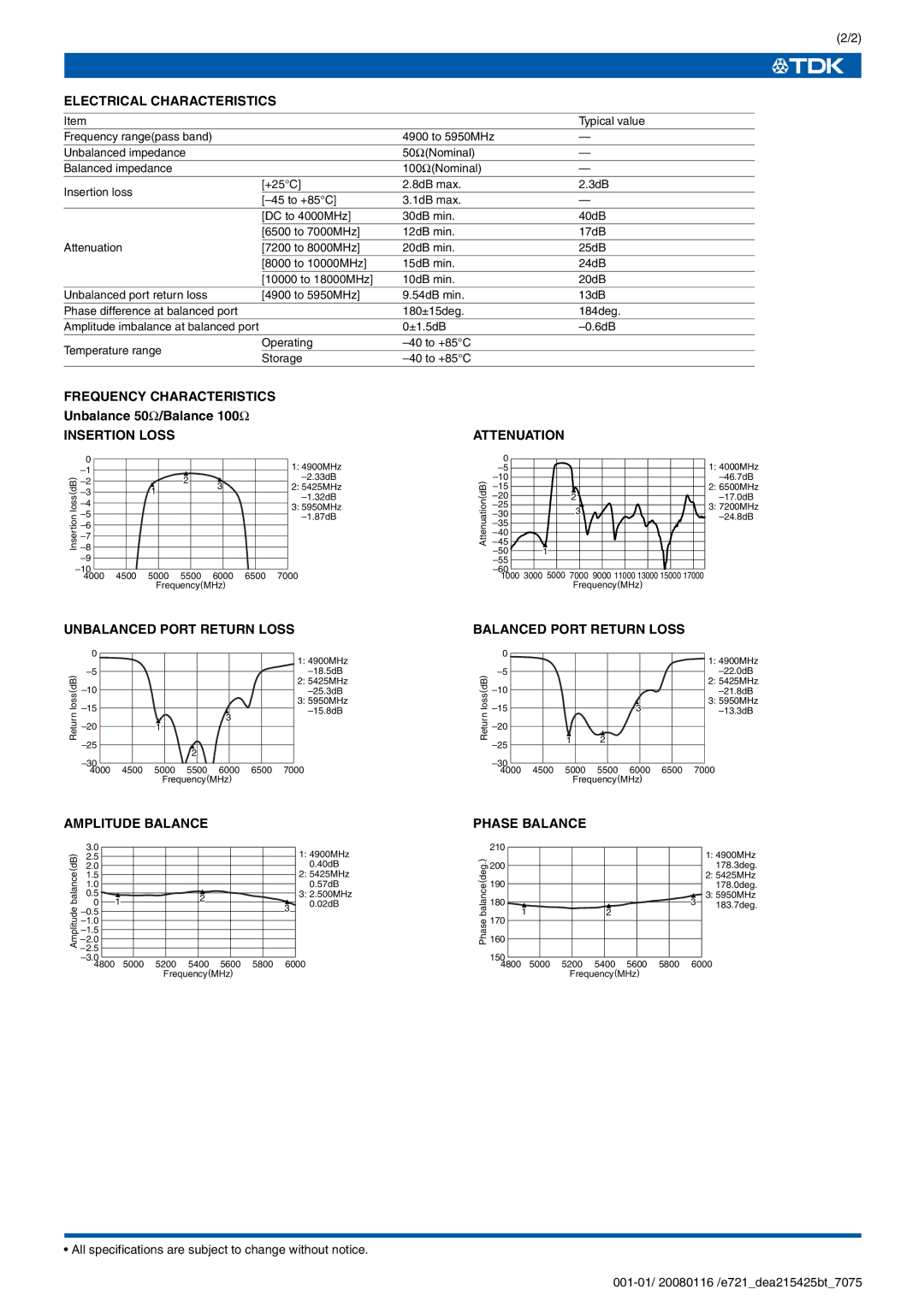DEA215425BT-7075C2, DEA Series specifications
The TDK DEA215425BT-7075C2 is a standout product within the DEA series, renowned for its advanced capabilities and robust specifications, tailored for various applications across multiple sectors. This component embodies cutting-edge technology designed for high performance and reliability, making it an ideal choice for engineers and designers seeking superior functionality in their projects.One of the key features of the DEA215425BT-7075C2 is its impressive voltage rating, which plays a critical role in ensuring stable operation under varied conditions. The component is designed to handle significant power levels, making it suitable for high-demand applications, including audio, telecommunications, and industrial equipment. With a focus on performance, the DEA series emphasizes efficiency, leading to lower power consumption and reduced heat generation, resulting in an overall enhancement of system reliability.
Additionally, the DEA215425BT-7075C2 boasts a compact form factor, which allows for easier integration into space-constrained designs. This miniaturization does not compromise its performance; instead, it enables engineers to design more versatile and powerful systems without the bulk traditionally associated with high-performance components. The thoughtful engineering of this product also includes impressive thermal stability, ensuring that it can maintain peak performance even under extreme temperature variations.
Another notable technology featured in the DEA215425BT-7075C2 is its enhanced noise suppression capabilities. This feature is essential in environments where signal clarity is paramount, such as in communication technologies and audio processing. By minimizing unwanted noise, the component helps maintain signal integrity and improves overall system performance.
Moreover, the DEA series is manufactured using TDK's proprietary materials, which are optimized for reliability and durability. This results in components that are not only high-performing but also resilient to the demands of various operational environments. The rigorous testing protocols followed during the development process further ensure that the DEA215425BT-7075C2 meets the stringent requirements of industry standards.
In summary, the TDK DEA215425BT-7075C2 exemplifies the high-performance characteristics of the DEA series, featuring a robust voltage rating, compact design, exceptional noise suppression, and outstanding thermal stability. These attributes position it as a premier choice for applications requiring reliable performance and efficiency, making it an essential component in the modern technological landscape.

